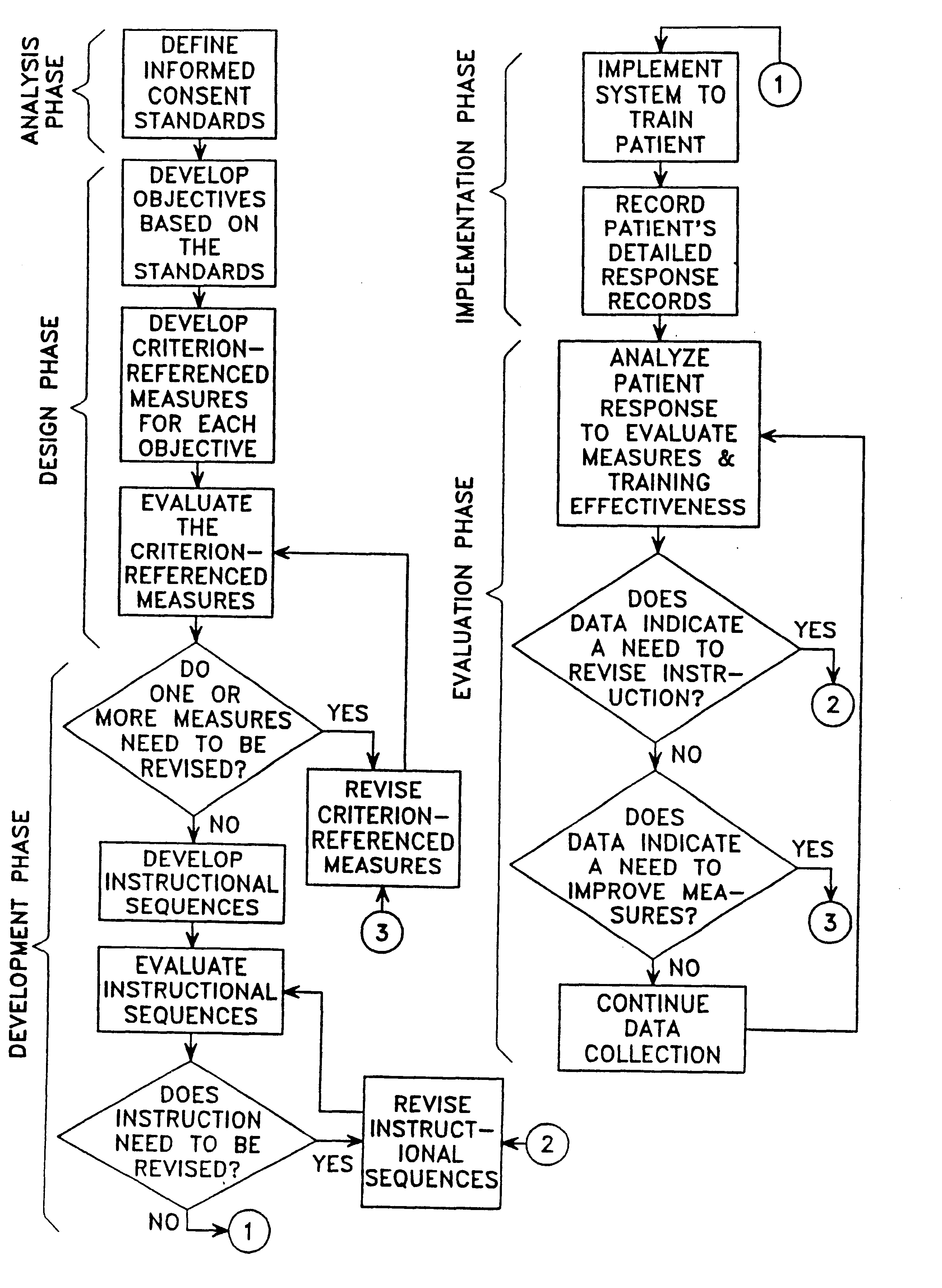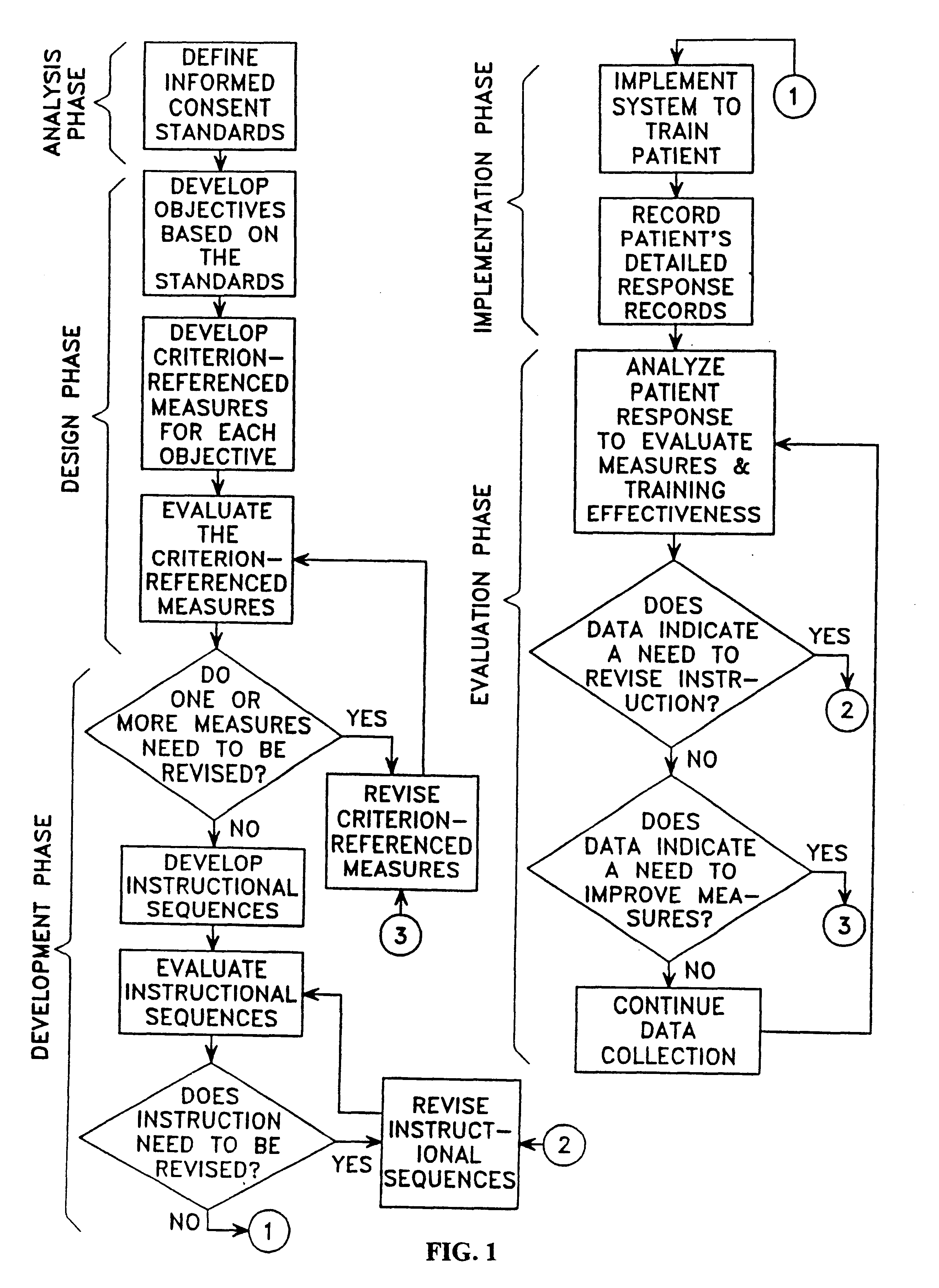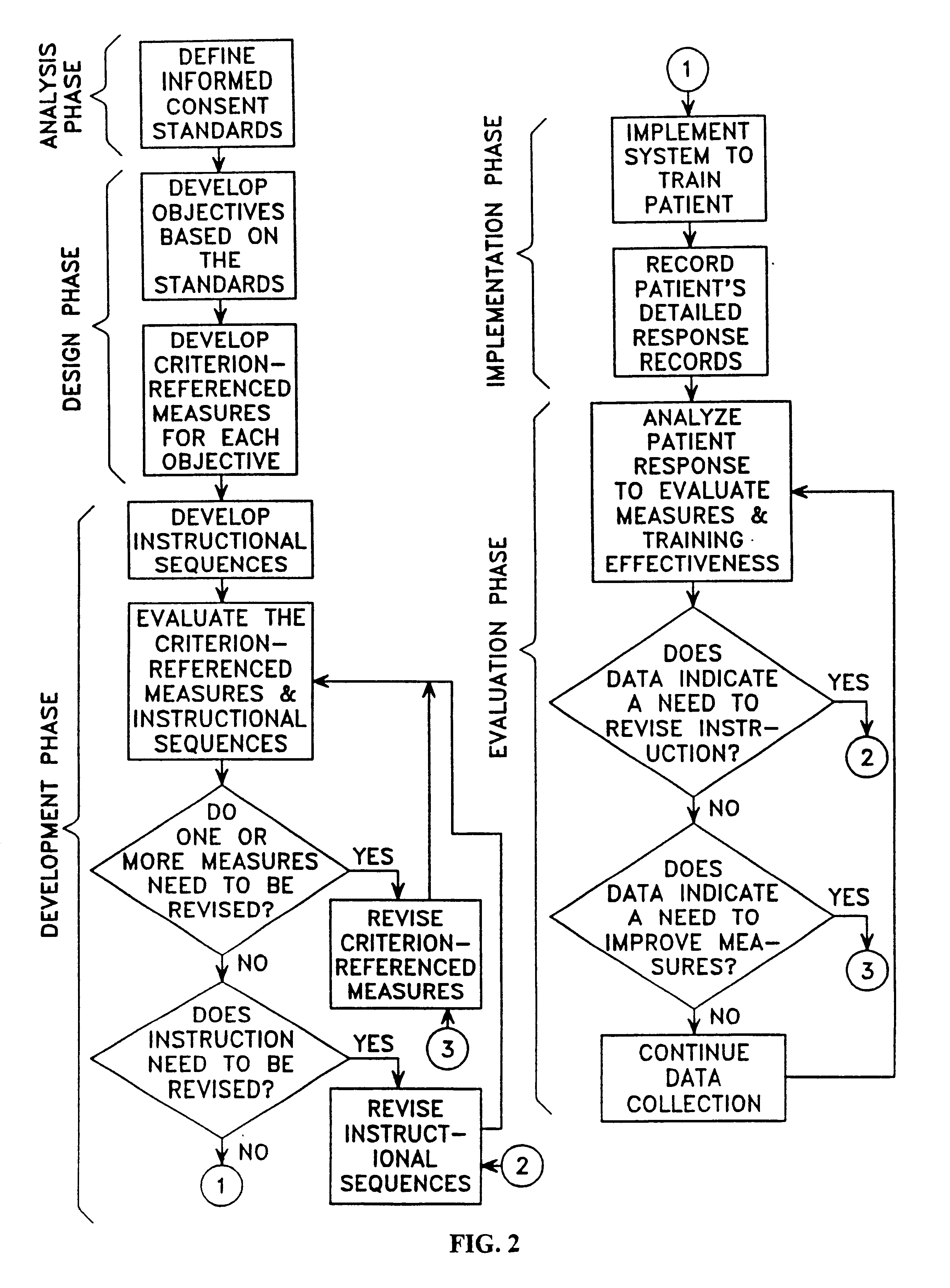Computer accessible methods for establishing certifiable informed consent for a procedure
a technology of informed consent and computer access, which is applied in the direction of teaching apparatus, patient-independent data management, instruments, etc., can solve the problems of affecting the degree of informed consent of most health care providers, the burden of legal requirements on the medical practitioner, and the inability to meet the requirements in time, so as to facilitate learning, monitor the state of knowledge, and be reliable and effective
- Summary
- Abstract
- Description
- Claims
- Application Information
AI Technical Summary
Benefits of technology
Problems solved by technology
Method used
Image
Examples
example
Scenario: Patient A is about to be admitted to the hospital under the care of Dr. Smith to undergo an abdominal (total) hysterectomy. Before the day of the scheduled surgery Dr. Smith will instruct Patient A to view the disclosure requirements of the procedure on a CAI system (the "invention"). Patient A will agree to view the CAI disclosure.
Procedure: Patient A will be situated, perhaps in a private room or waiting area, to begin review of the CAI. Section I / Part 1: Patient A will be presented background information on abdominal hysterectomies, such as some general information on the medical procedure, and perhaps why it was probably recommended for her condition. At any time during presentation, it may be possible for Patient A to input a command (such as touch the screen, or press a button) to advance to, or return to a specific section / part. Section I / Part 2: Patient A will now be presented with a variety of open-ended questions, such as:
List 2 conditions which may require an ab...
PUM
 Login to View More
Login to View More Abstract
Description
Claims
Application Information
 Login to View More
Login to View More - R&D
- Intellectual Property
- Life Sciences
- Materials
- Tech Scout
- Unparalleled Data Quality
- Higher Quality Content
- 60% Fewer Hallucinations
Browse by: Latest US Patents, China's latest patents, Technical Efficacy Thesaurus, Application Domain, Technology Topic, Popular Technical Reports.
© 2025 PatSnap. All rights reserved.Legal|Privacy policy|Modern Slavery Act Transparency Statement|Sitemap|About US| Contact US: help@patsnap.com



